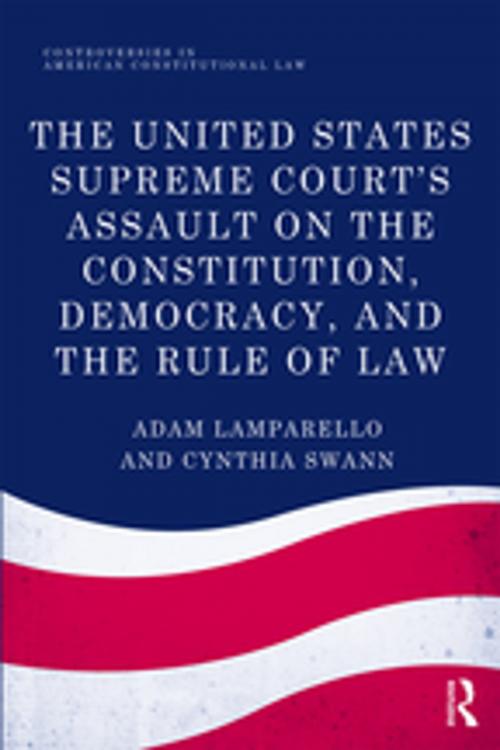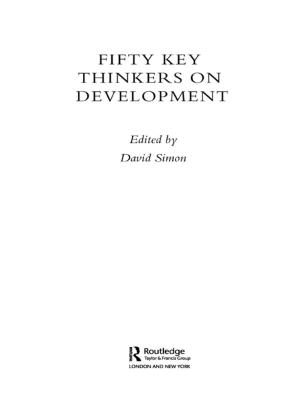The United States Supreme Court's Assault on the Constitution, Democracy, and the Rule of Law
Nonfiction, Reference & Language, Law, Courts, Jurisprudence, Constitutional| Author: | Adam Lamparello, Cynthia Swann | ISBN: | 9781315407760 |
| Publisher: | Taylor and Francis | Publication: | December 1, 2016 |
| Imprint: | Routledge | Language: | English |
| Author: | Adam Lamparello, Cynthia Swann |
| ISBN: | 9781315407760 |
| Publisher: | Taylor and Francis |
| Publication: | December 1, 2016 |
| Imprint: | Routledge |
| Language: | English |
This book argues that the judiciary, particularly the Supreme Court, should embrace an interpretive framework that promotes equal participation in the democratic process, fosters accountability, and facilitates robust public discourse among citizens of all backgrounds. The authors propose a solution that strives to restore integrity to the Court’s decision-making process by eschewing ideology and a focus on the utility of outcomes in favor of an intellectually honest jurisprudence that gives all citizens a meaningful voice in governance.
The work is divided into seven parts. Parts I–V identify the worst decisions in the Court history and the common themes that helped produce them. The chapters within each part are dedicated to a single Supreme Court decision, in which the authors analyze the Court’s reasoning and explain why it undermined federalism, separation of powers, and democratic governance. Additionally, the authors explain why these decisions compromised the relationship between the Court and coordinate branches, the federal government and the states, and citizens and their elected representatives. Part VI identifies several of the best Supreme Court decisions, and explains why they provide a principled framework that can be applied in other cases and result in a pro-democracy jurisprudence. Finally, in Part VII the authors propose a comprehensive solution that should inform the Justices’ judicial philosophies, regardless of ideology, and strive to promote an equal and participatory democracy. The final chapter offers concluding thoughts and argues that a healthy democracy is the foundation upon which equality rests, and that a collective view of rights is the path by which to restore liberty for all citizens.
This book argues that the judiciary, particularly the Supreme Court, should embrace an interpretive framework that promotes equal participation in the democratic process, fosters accountability, and facilitates robust public discourse among citizens of all backgrounds. The authors propose a solution that strives to restore integrity to the Court’s decision-making process by eschewing ideology and a focus on the utility of outcomes in favor of an intellectually honest jurisprudence that gives all citizens a meaningful voice in governance.
The work is divided into seven parts. Parts I–V identify the worst decisions in the Court history and the common themes that helped produce them. The chapters within each part are dedicated to a single Supreme Court decision, in which the authors analyze the Court’s reasoning and explain why it undermined federalism, separation of powers, and democratic governance. Additionally, the authors explain why these decisions compromised the relationship between the Court and coordinate branches, the federal government and the states, and citizens and their elected representatives. Part VI identifies several of the best Supreme Court decisions, and explains why they provide a principled framework that can be applied in other cases and result in a pro-democracy jurisprudence. Finally, in Part VII the authors propose a comprehensive solution that should inform the Justices’ judicial philosophies, regardless of ideology, and strive to promote an equal and participatory democracy. The final chapter offers concluding thoughts and argues that a healthy democracy is the foundation upon which equality rests, and that a collective view of rights is the path by which to restore liberty for all citizens.















